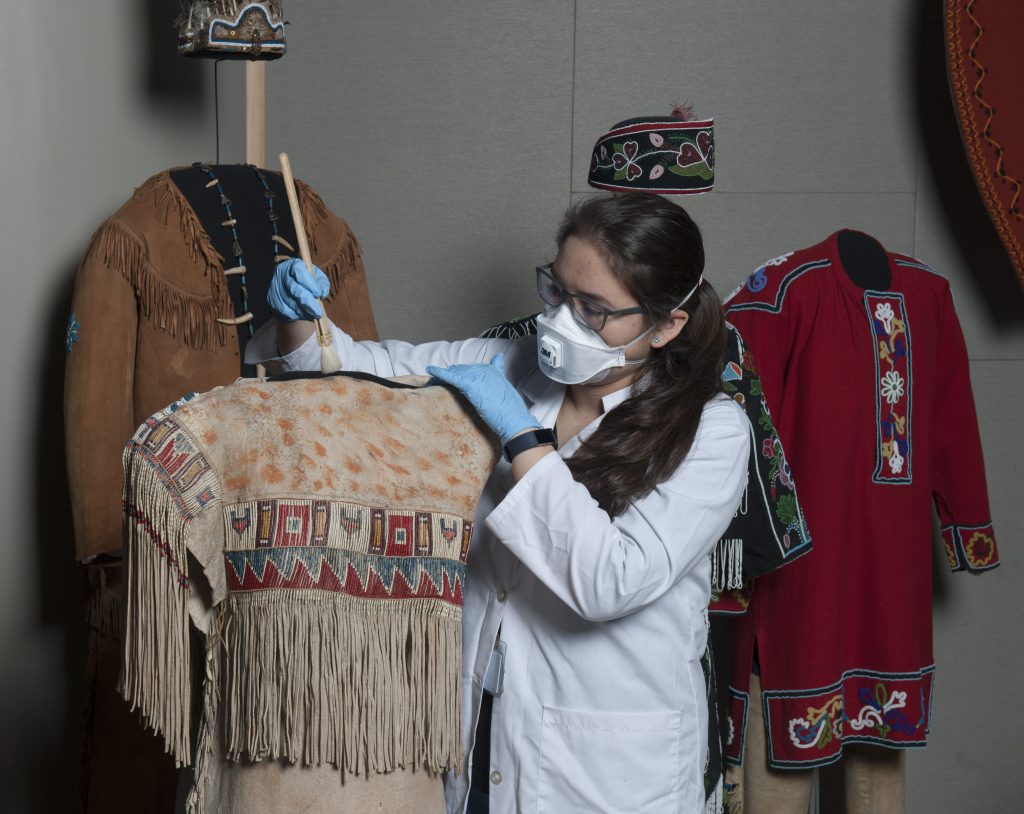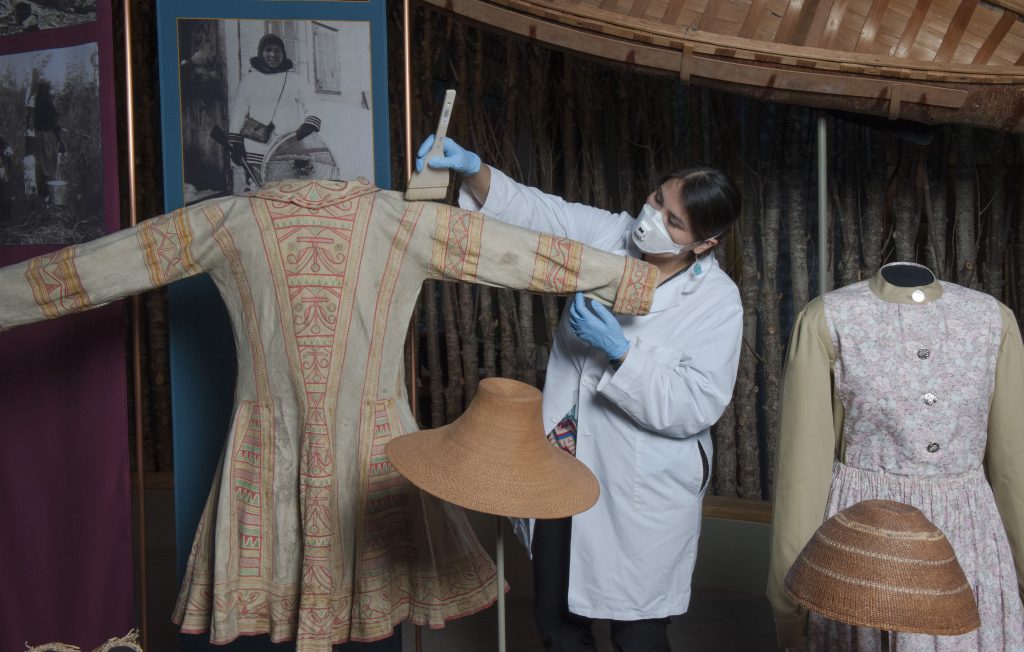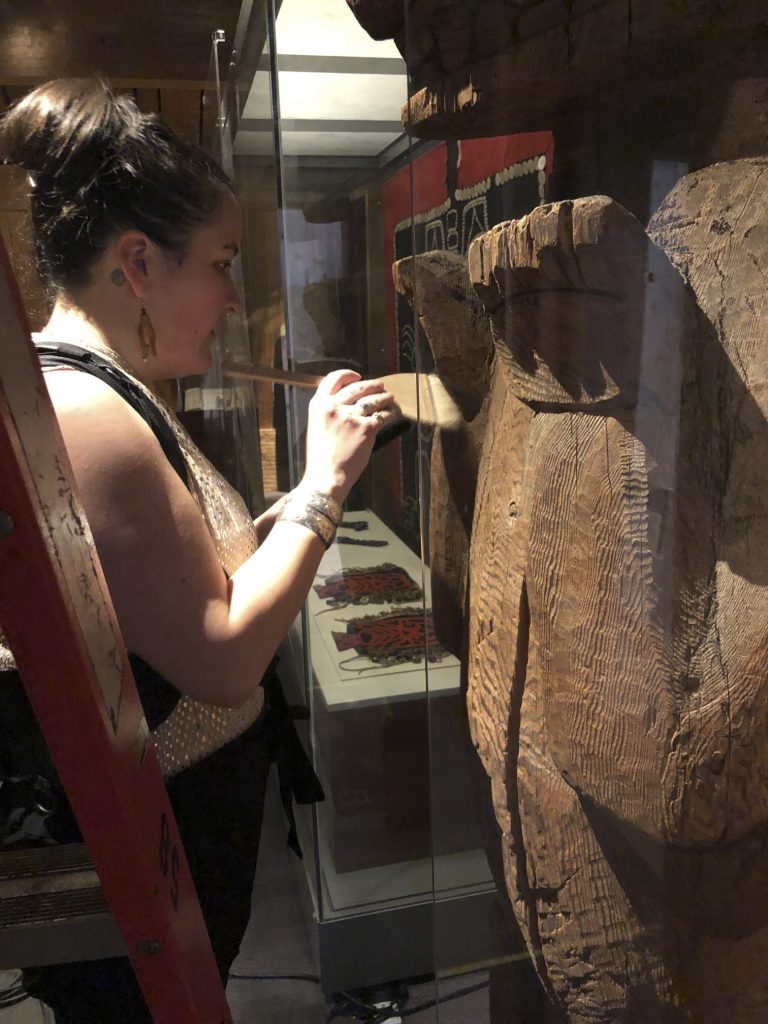Museum Closure Week: More Than Just an Annual Cleaning
This year we celebrate the 26th year of the RBC Indigenous Internship Program (formerly known as the RBC Aboriginal Training Program in museum practices). During the last 26 years, the Museums have welcomed over a hundred interns from more than 40 Indigenous nations throughout Canada. Graduates have become role models in their communities and have participated in the promotion of the museological and cultural sectors.
The Museum’s annual maintenance week is one of the most interesting aspects of the internship. The interns get to learn more about the various roles of conservators, all while participating directly in the maintenance of the Museum.
Below are some insights that this year’s interns provided about their experiences during the Museum’s closure week.
Koleka’s experience
During the Museum’s closure week, I had the opportunity to go behind the scenes to assist with the cleaning and maintenance of artifacts on display.
I worked with Emily (one of the textile conservators). At the start, we were cleaning sections of the First Peoples Hall with Dominique and Jenny. We wore lab coats, masks and gloves to protect ourselves, our clothes and the artifacts. In most cases it was an option, however, I usually wore them.
In the beginning, I was very nervous about being so close to the artifacts, but I became more confident and comfortable. Emily and Dominique were very helpful and made me feel at ease asking questions. In my opinion, this was probably my favourite experience so far; I really enjoyed myself and the people I got to work with.

“During the Museum’s closure week, I had the opportunity to go behind the scenes to assist with the cleaning and maintenance of artifacts on display.” – Koleka, intern, RBC Indigenous Internship Program
Jenny’s experience
I went into the closure week at the Museum a bit apprehensive, knowing that I would be cleaning precious artifacts, but the days went by quickly and it was fun. I worked alongside Emily and Dominique from Conservation, and Koleka in the First Peoples Hall. It was nerve-racking, but the four of us ended up working together in the exhibition displays, which I found made it more fun. It was a great experience to see what Conservation must do, and how meticulously and delicately they worked with the artifacts.
I knew that a certain type of handling must be done when working with artifacts, but it was fun to be a part of it. If asked my favourite part of the week, I don’t have one — I enjoyed all of it and the physical aspect of it.

“I knew that a certain type of handling must be done when working with artifacts, but it was fun to be a part of it.” – Jenny, Intern, RBC Indigenous Internship Program
Ariane’s experience
Being able to participate in the cleaning of the Grand Hall was a wonderful experience. I was able to help dust totem poles, the Spirit of Haida Gwaii, and a canoe painted by my great-great-grandfather, Charles Edenshaw. Such experiences wouldn’t be available to me on just any regular day, so I felt very lucky to do this.
This internship has provided me with opportunities to closely study objects and pieces from my own community and nation, from small objects like tools or baskets, to bigger objects like totem poles and canoes. I think that cleaning the objects on display is very important, not just for the objects or the Museum, but for the energies and spirits of the people who created these pieces; and it may bring more energy into them for the upcoming year. I hope that when the Museum opens again, people may appreciate the time it takes to preserve the life and quality of these pieces for future visits.

“Such experiences wouldn’t be available to me on just any regular day, so I felt very lucky to do this.” – Ariane, Intern, RBC Indigenous Internship Program